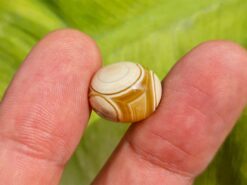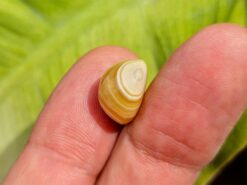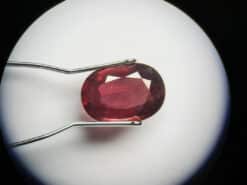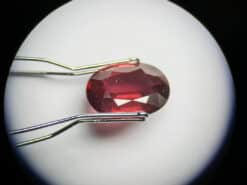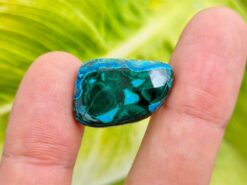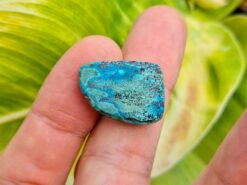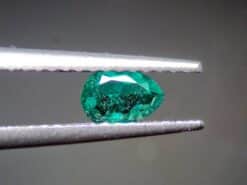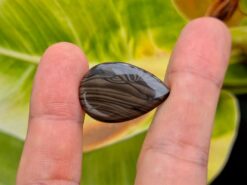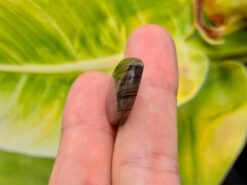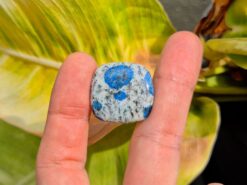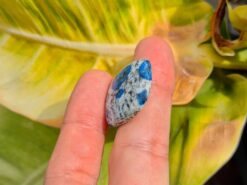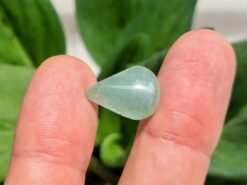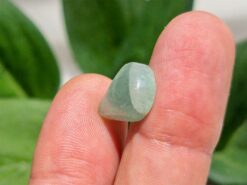Chondrodite

Chondrodite gem from Myanmar.
Buy natural gemstones in our gem shop
Chondrodite gem
A nesosilicate mineral with formula (Mg,Fe)5(SiO4)2(F,OH,O)2. Although it is a fairly rare mineral, it is the most frequently encountered member of the humite group of minerals. It is formed in hydrothermal deposits from locally metamorphosed dolomite.
It is also found associated with skarn and serpentinite. It was discovered in 1817 on Mt. Somma, part of the Vesuvius complex in Italy, and named from the Greek for “granule”, which is a common habit for this mineral.
Chondrodite mineral formula
Mg5(SiO4)2F2 is the end member formula as given by the International Mineralogical Association, molar mass 351.6 g. There is usually some OH in the F sites, however, and Fe and Ti can substitute for Mg, so the formula for the naturally occurring mineral is better written (Mg,Fe,Ti)5(SiO4)2(F,OH,O)2.
Color
Chondrodite with magnetite, Tilly Foster mine, Brewster, New York, USA
The stone is yellow, orange, red or brown, or rarely colorless, but zoning of different color intensity is common, and intergrown plates of chondrodite, humite, clinohumite, forsterite and monticellite have been reported.
Optical properties
THe stone is biaxial(+), with refractive indices variously reported as nα = 1.592 – 1.643, nβ = 1.602 – 1.655, nγ = 1.619 – 1.675, birefringence = 0.025 – 0.037, and 2V measured as 64° to 90°, calculated: 76° to 78°. Refractive indices tend to increase from norbergite to clinohumite in the humite group. They also increase with Fe2+ and Ti4+ and with (OH)− substituting for F−. Dispersion: r > v.
Environment
It is found largely in metamorphic contact zones between carbonate rocks and acidic or alkaline intrusions where fluorine has been introduced by metasomatic processes. It is formed by the hydration of olivine, (Mg,Fe2+)2SiO4, and is stable over a range of temperatures and pressures that include those existing in a portion of the uppermost mantle.
Chondrodite metaphysical properties
Beyond their everyday use of beautification in ornaments and decoration, a dedicated therapy involves using crystals for healing chronic ailments. This practice which utilizes chondrodite healing properties is known as crystal healing.
Chondrodite, from Myanmar

